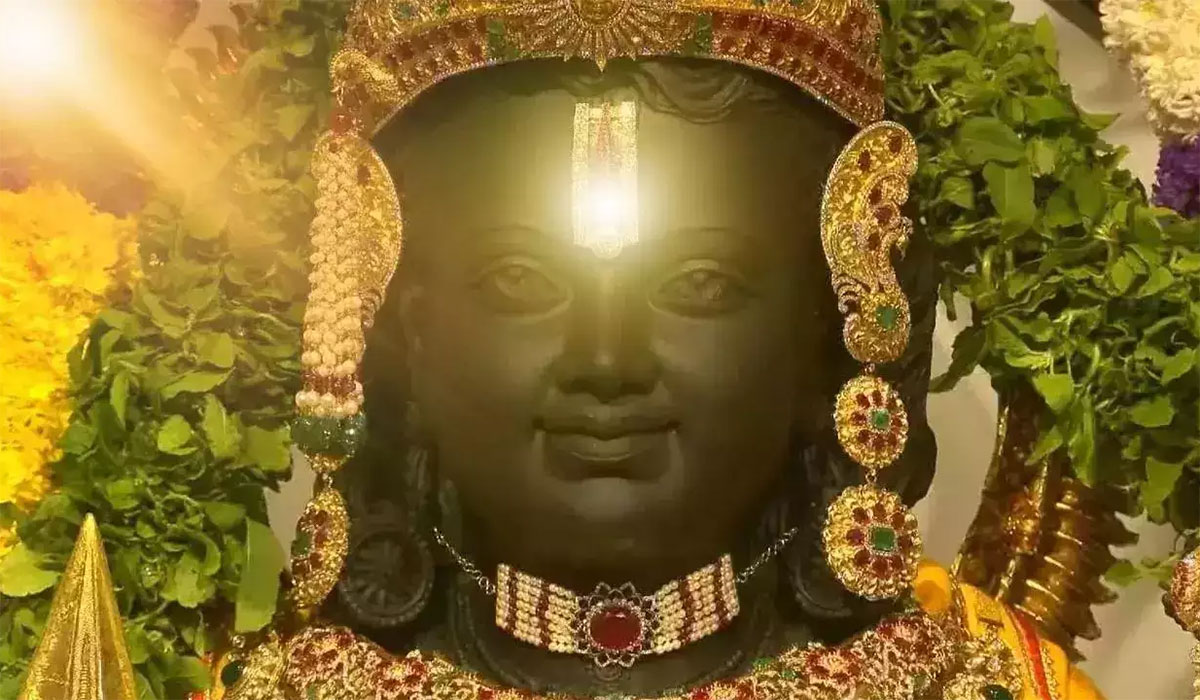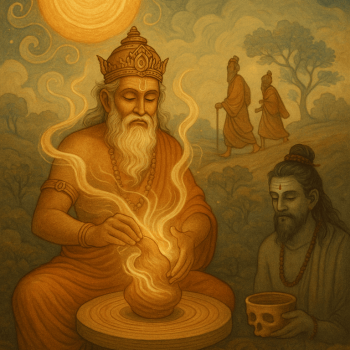
The Surya Tilak mechanism, developed by scientists for the Ram Lalla idol in Ayodhya’s Ram Temple, represents a ground-breaking integration of traditional religious symbolism and modern optical engineering, highlighting a unique convergence of spirituality and scientific innovation in contemporary temple architecture.
In the heart of Ayodhya, an extraordinary blend of spiritual devotion and scientific ingenuity has come to life at the Ram Temple through the Surya Tilak mechanism – a sophisticated architectural feature designed to capture the sun’s rays and illuminate the forehead of Lord Ram’s idol on Ram Navami, the auspicious day marking his birth. The introduction of the “Surya Tilak” — promises to revolutionize the way devotees interact with the sacred idol of Ram Lalla. This innovative system, designed by a team of Indian scientists and engineers, harnesses the power of mirrors and lenses to create a poignant spiritual moment each year. It reflects not only the sun’s rays but also India’s capability to meld its rich cultural heritage with cutting-edge technology.
For centuries, pilgrims have journeyed to Ayodhya to pay homage to Lord Ram, a central figure in Hindu mythology and the focus of deep spiritual devotion. The Ram Janmabhoomi temple holds a special place in the hearts of millions worldwide, serving as a site of profound religious significance.
Central to the temple’s sanctum sanctorum is the divine representation of Ram Lalla, the infant form of Lord Ram. Devotees come from far and wide to offer prayers and seek blessings from this sacred idol. However, owing to the constraints of space and the sheer volume of visitors, not everyone gets the opportunity for a close-up view or to make direct eye contact with the deity.
Recognizing this challenge, a group of scientists collaborated with the temple authorities to develop an ingenious solution — the Surya Tilak. Inspired by the ancient principles of optics and modern engineering, this system incorporates a combination of mirrors and lenses strategically positioned around the idol.
The Genesis of the Surya Tilak Mechanism
The Surya Tilak mechanism is specifically designed to align with the annual celebration of Ram Navami, marking the birth of Lord Rama, one of Hinduism’s most revered deities. The primary goal was to ensure that on every Ram Navami, observed on the ninth day of the first month of the Hindu calendar (March-April), the sun’s rays would gloriously mark Lord Ram’s forehead. The system ingeniously positions mirrors and lenses to focus the sunlight directly onto the forehead of the Ram Lalla idol at precisely noon on this auspicious day. This alignment ensures that the idol receives a “tilak” of sunlight, a symbolic gesture that underscores the divine nature of the idol and the occasion.
Collaboration of Science and Spirituality
The project was developed with the technical assistance of the Indian Institute of Astrophysics in Bengaluru, which provided expertise on the precise solar pathways necessary for the alignment. The Department of Science and Technology and various other scientific organizations also contributed to this unique collaboration between spiritual tradition and modern science.
The design involves a sophisticated arrangement of mirrors and a lens system placed strategically within the temple’s architecture. These are not ordinary mirrors but carefully crafted reflective surfaces and lenses capable of redirecting sunlight from the temple’s shikara (spire) down to the sanctum sanctorum where the idol resides.
Engineering and Cultural Significance
The engineering behind the Surya Tilak mechanism is a marvel of precision and sustainability. The actual mechanism consists of a series of precision lenses and mirrors, crafted by Optica in collaboration with the Indian Institute of Astrophysics. The system uses a gearbox and reflective mirrors/lenses that track the sun’s path without the need for electronic controls, ensuring longevity and reliability. The entire setup is designed to be low maintenance, using materials and techniques that promise to keep the Surya Tilak functional for a century or more. The materials used, primarily ‘Pancha Dathu’ (a traditional alloy of five metals), ensure the mechanism’s durability. Additionally, the design accommodates easy replacements of optics as needed to guarantee continuous operation.
Culturally, the Surya Tilak has added a new layer of significance to the Ram Temple. It not only attracts devotees who come to witness this divine interplay of light and spirituality but also sparks interest among those keen on the integration of traditional beliefs with technological advancements.
The Broader Impact
Beyond its immediate religious and cultural implications, the Surya Tilak mechanism serves as a testimony to India’s progressive approach to preserving and enhancing its cultural landmarks. This project sets a precedent for other heritage and religious sites around the world, demonstrating how technology can be used to celebrate and perpetuate cultural traditions in new and meaningful ways.
Surya Tilak in other temples in India
The concept of Surya Tilak, where the sun’s rays specifically illuminate an idol or an important part of a temple at certain times, is a fascinating architectural feature that can be found in several temples across India. These features showcase the advanced understanding of astronomy and architecture possessed by ancient Indian builders. Here are a few examples of other temples in India where similar phenomena occur:
- Brihadeeswarar Temple, Tamil Nadu: At this UNESCO World Heritage Site, the temple’s design is such that the sanctum sanctorum (the innermost sanctuary) is lit up by the sun’s rays during certain times of the year. This temple is a brilliant example of Dravidian architecture and was built during the Chola dynasty.
- Sun Temple, Modhera, Gujarat: The entire design of this temple revolves around the sun. Built-in the 11th century, the temple is positioned in a way that during the equinoxes, the sun’s rays shine directly on the idol within the temple, illuminating the sanctum sanctorum.
- Gavi Gangadhareshwara Temple, Karnataka: This temple in Bangalore is famous for its mysterious stone discs in the forecourt and the precise planning allowing the sun to shine on the shrine in certain times of the year. Specifically, on the day of Makar Sankranti, the sun’s rays pass through the horns of a stone bull outside and light up the idol inside.
- Kanyakumari Temple, Tamil Nadu: Located at the southern tip of the Indian peninsula, this temple is uniquely situated for astronomical events. The temple and its surroundings are famed for both sunrise and sunset views at various times of the year, with the deity supposedly bathed in the morning sun’s rays.
- Dakshinaarka Temple, Gaya, Bihar: Dedicated to the sun god, this temple is constructed in such a way that the inner sanctum receives the sun’s rays directly for a certain period each day, highlighting its significance and aligning with its dedication to Surya, the sun deity.













